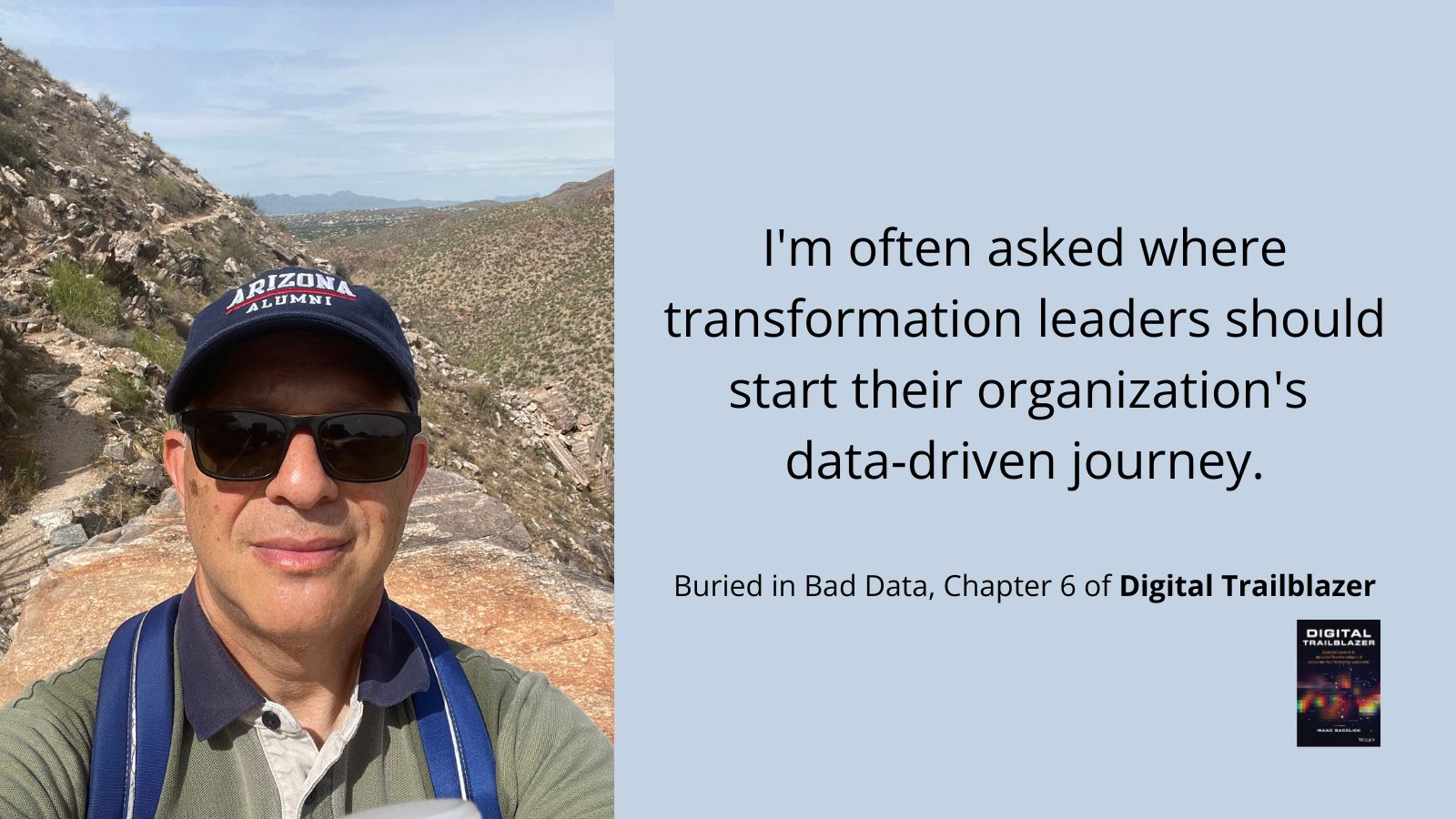I am writing today’s blog post from Tucson, where I wrote the epilogue to Digital Trailblazer.
“I’m taking a different type of walk today, a hike actually, on one of the
trails winding through Saguaro National Park in Tucson, Arizona,” is how I
opened the chapter where I reflect on my journey writing the book. I took a
similar but much longer hike yesterday through Sabino Canyon.
Today, I say goodbye to my older son, who is starting his sophomore year at
The University of Arizona studying aerospace engineering.
During my stay here, I encountered two issues at my hotels that made me
think about how data issues, or just not leveraging data, can lead to poor
customer experiences. At my first hotel, they emailed me three days before
check-in, apologizing for the construction renovations at my hotel. There was
no context on the type of construction, and of course, the hotel notified me
too late to make any change in plans. At the second hotel, one that I’ve
stayed at many times, a new parking fee showed up on my bill without any
notice when I booked the room or checked in.
These are the hard data issues where the data exists, but the automation to
connect the information to customers is poorly implemented.
Data governance leaders
face difficult challenges, including identifying data owners, actioning data
policies, automating data flows, and monitoring data health. In most
situations, data governance leaders are only facilitators and must partner
with business, technology, security, and compliance leaders on the policies
and implementation.
Proactive data governance
requires a defensive and offensive mindset; how are data leaders protecting
the organization and its data – and how are data cleansing, mastering, and
automation efforts enabling customer experiences, workflow improvements, and
other strategic advantages?
In my
Driving Digital Standup
video I posted last week, I share
four important priorities for smart and safe data governance leaders. These priorities are all in the data leader’s “backyard,” where it should
be easier to find partners in IT and security to implement and find quick
wins.
Finding the quick wins where data quality is important
Here are some ways I seek quick wins for data governance leaders
- Keep version one of policies simple and add exceptions later
- Prioritize mature data security practices and technologies that are easy to implement
- Look for wins in IT, security, and compliance with leaders ready to partner
- Use agile data practices to align governance work with business efforts in building dashboards and ML models
- Seek business leaders with an analytics mindset, especially in areas where improving data health impacts revenue and customer experiences
- Look for where the organization is growing or should be accelerating its data practices, then align with AIOps, MLOps, ModelOps, and other solutions that drive scalability
Businesses are adding new data sources and looking for new ways to enable
data-driven organizations. There are departments adding
citizen data scientists
to create dashboards for decision-making, while AI and machine learning
require creating
trustworthy centralized data sources. Bottom line – the priorities for data governance leaders are
never-ending, and my advice is to seek quick wins, even when trying to climb
data debt mountains.
To read more of my stories, see Chapter 6 of
Digital Trailblazer, “Buried in Bad Data.”
Join us for a future session of Coffee with Digital Trailblazers, where we discuss topics for aspiring transformation leaders. If you enjoy my thought leadership, please sign up for the Driving Digital Newsletter and read all about my transformation stories in Digital Trailblazer.



No comments:
Post a Comment
Comments on this blog are moderated and we do not accept comments that have links to other websites.